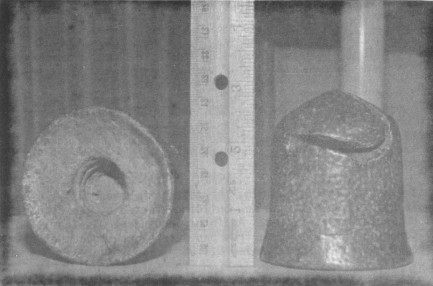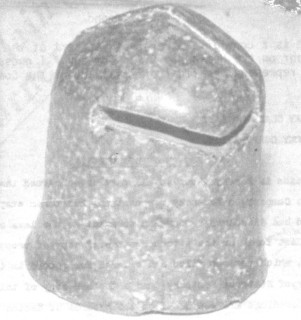Patent #2,266,340
by Jack Snyder
Reprinted from "INSULATORS - Crown Jewels of the Wire", July 1984, page 20
Last month I slipped and bumped my head in the
shower stall. After regaining consciousness, Walter Mitty and I decided I'd
waited long enough to embark on another career. Heck, I'm already an
accomplished telephone man and beekeeper. We narrowed the field down to the
following promising categories: male nursing, journalism and javelin catching
(84 Olympics). It wasn't hard to decide, since I had procrastinated for such a
long time -- journalism! Now what could I write about?
It's been almost ten years
since I got my July '74 issue of CJ and found a fellow Toledoan had made the
cover story. Nevin Y. Sindlinger had gotten an insulator patent. In the ensuing
months I'd made a few calls, scribbled a few notes, and even jotted some
paragraphs concerning the man and his patent. Then I unceremoniously slipped the
notes inside the issue and filed it with the rest of my CJ's.
Mr. Sindlinger was
a combination electrician/signalman for the Wheeling and Lake Erie Railroad.
Evidently after tying one too many signal wires to insulators, he thought there
had to be a better way. The constant tinkerer that he was, he set out to improve
the design of a quick connecting insulator. He sought the advice of fellow
workers and other knowledgeable people for their ideas. After two years of
dabbling, Mr. Sindlinger managed to firm up his invention and locate Mr.
Lawrence Witker (an attorney) to officially file.


All the while Mrs. Sindlinger
had second thoughts about her husband spending much needed money on the folly.
Upwards of one hundred dollars was spent on fees, applications, etc., a
considerable sum in the early 1940's for any household. Due to lack of money,
the patent models were made by hand in the workshop. According to his daughter,
the models had to be fired in New Philadelphia, Ohio. The original idea involved
a glass insulator, but I'm sure finances dictated clay be used in the mock up.
I'd also guess, since the schematic doesn't resemble the model, he found it
nearly impossible to bring the patent to life. There is a striking resemblance
to it and Tod's U-183. I wonder if at one time that insulator didn't influence
his thinking? Note page 55 in Tod's guide book.
Mr. Sindlinger approached
Western Electric concerning possible use and production. They, in turn, referred
him to Hemingray. As his daughter recalls, nothing ever came of the
correspondence with the glass company. Needless to say, the idea and patent died
on the vine. These two models are truly limited editions. I understand one of
the daughters is keeping them. The family is not interested in selling them.
| 